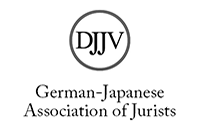Wortsegmentierungsregeln (nicht nur) für japanische Rechtsbegriffe
Abstract
Albeit possibly not within the strict boundaries of the general definition of the linguistic technical term ‘word segmentation’, this paper attempts to find and propose – for use in legal terminology, but not necessarily restricted thereto – word segmentation and hyphenation rules at the transliteration level.
In the introductory part, the author concedes that any transliteration of languages with logographic scripts (be it purely logographic or a mixture of logographic and phonological, like the Japanese language) is, in most cases, just a means to achieve an entirely different aim. That is certainly true with respect to legal research, i.e. in the field of comparative studies of law. The absence of acknowledged rules for a clear segmentation of compounds, or ‘strings’, of kanji 漢字in transliterations, however, leaves the trans-literation ‘tool’ to be much less effective than it actually could be. While most authors do segment, there exist no rules and hence any segmentation is left to the discretion and made subjectively. And where authors do without segmentation, endless strings of nouns or compounds are created (e.g. 証明責任分配論 shômeisekininbunpairon or 貸借対照表犯罪taishakutaishôhyôhanzai) which makes the reading complicated – not to speak of the considerable difficulties to immediately get any idea as to the meaning.
The first section of the article in its part II. deals in more detail with the question of the use of hyphenation – again, at the level of transliteration – for making nouns easier to understand when broken down into defined units. The author’s first suggestion in connection with the smallest units, binary compounds, is to do without hyphens in on-yomi 音読み or kun-yomi 訓読よみ readings – or in mixed forms thereof. While admitting that transliterations in such cases tend to become rather long, the existence of many kun-kun-on and on-kun-on readings could run counter the aim of making things easier to understand. Based on the accepted and widely applied fact that most nouns are in the form of binary compounds – like 法律 hôritsu or 請求seikyû – it is suggested to keep these as separate units and separate these accordingly. To state just a few examples in legal texts: baishô sekinin 賠償責任 or soshô jôken 訴訟条件. The paper then goes on to focus on terms composed of a string of three characters, ternary compounds, like 請求権seikyû-ken, 離婚者rikon-sha or 登記簿tôki-bo (second section of part II). The most ‘revolutionary’ suggestion here is to always separate the third morpheme from the preceding binary compound by a hyphen. This rule is to apply even in cases where it had become customary, at least in the German context, to do without a hyphen, like, e.g. in bengoshi 弁護士 (thus to become bengo-shi), saibansho 裁判所or saibankan 裁判官. The main reason being that it were difficult to explain why bengo-shi should be treated differently from, e.g. the closely related terms bengo-nin 弁護人 or bengo-gawa 弁護側. The only major exception the author suggests to allow without hyphenation is adjective forms like seishinteki or butteki – for reason of their easily identifiable ending -teki.
In the third section there follow detailed analyses and descriptions as to the separation, by the use of hyphens, of prefixes and suffixes. The paper suggests a separation of the prefix and suffix, respectively, by a hyphen like e.g. in fu-rikô 不履行. Neither a full separation, i.e. a ‘stand-alone’ solution, of the prefix (fu rikô) nor the incorporation of the prefix to become a merged single compound, furikô, seems to be a feasible alternative. This finding has to be seen in direct conjunction with the next issue discussed: strings of four characters in which the four characters are not just two connected binary compounds. These could be compounds where a binary structure is coupled with both a prefix and a suffix – like in mi-haitô-kabu 未配当株. The rule to be followed is that both the prefix and the suffix are each to be separated by a hyphen. The above-mentioned term mihaitôkabu serves as a good example: without any hyphenation the transcribed term would remain difficult to visually catch. Lastly – and for just the same reasons – the paper suggest to treat all situations where a ternary compound is paired in one string with a ‘connected’ fourth character in a similar way. Two examples of this category are saiken-hô-jô 債権法上 or kamei-koku-kan 加盟国間. While conceding that some may find the ‘double hyphenation’ in transliterations tedious, the pros should outweight the cons: who would not agree that fuhôkôihôjô is by far more difficult to correlate to its kanji original than its segmented and hyphenated version fuhô kôi-hô-jô ?
The use of apostrophes to facilitate readers’ understanding is dealt with in part III. The first (generally quite acknowledged) rule is that an apostroph should be used whenever in a binary compound the first character ends with the hiragana ん (in transliteration: ‘n’). Examples are gen’in 原因, jun’eki 純益 or hon’an 本案. The second suggestion for the use of apostrophes is where the hiragana んis followed by any hiragana of the ‘y’ group: ya や or yu ゆ, like in in’yô 引用or sen’yû 占有. The rule becomes even more helpful if it is applied to cases where the 'y' appear in their ‘broken form’, i.e. nyu or nyo (or the corresponding long forms nyû and nyô) and the preceding hiragana is not an ん. Good examples are dô’nyû 導入 or yu’nyû 輸入. Lastly, the author suggests the use of an apostrophe in any cases where two of the same vowels – or, in fact any vowels – stand in tandem, i.e. follow each other. Examples being ba’ai 場合 and gi’in 議院 (or 議員) for the first group and ki’an 起案 or sha’in 社員 for the latter. The rule is easily extendable and, in the view of the author, clarifies many ambiguous situations where e.g. a hiragana ん finds itself standing connected to any of the afore-mentioned ‘broken vowels’ nyu or nyô: It is easy to understand that in such situations the correct transliteration should read, e.g. san’nyû 参入 and shin’nyû 進入. In the same context the author points out that in some situations the question is not alone whether to use an apostrophe – but rather where to place it: see the examples of kô’nin 後任as opposed to kon’in 婚姻 and kin’yû 金融 versus ki’nyû 記入.
The article contains numerous more examples and attempts to give further explanations covering other, yet similar, situations for a separation by hyphens on the one hand and of the use of apostrophes on the other. The application of the set of rules of this paper have so far revealed very few flaws. Exceptions to the rules are astonishingly rare. Some of the suggestions need some more research and, possibly, re-thinking. The author nevertheless expresses his hope that the ideas presented will, at a minimum, serve as a starting point for fruitful discussions to come. As indicated in the introductory part of the paper, transliteration is a mere tool to facilitate matters. Why not then bring this tool to a more ‘easy-to-use’ level and, by this, make it even more effective?






